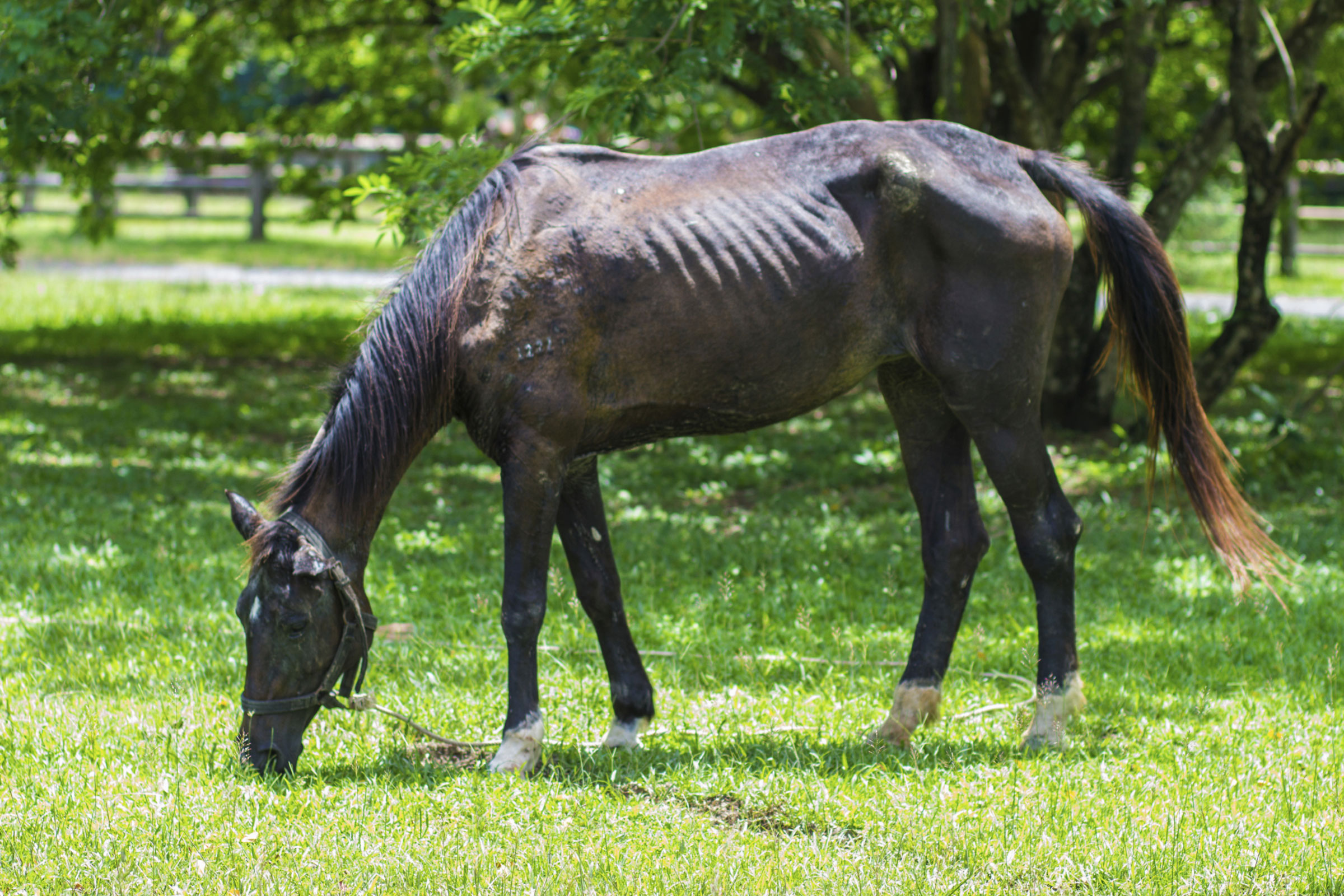
On occasion, the horse industry relies on well‐intentioned horse owners to rescue horses and other equids from negative situations. These horses rarely come with a history of their breed, age, training level, health, temperament, or disposition. Many times, rescuing or fostering these horses takes a skilled horse person with monetary resources.
The goal of this article is to outline some of the common needs and costs of rescuing a horse.
Adoption or Purchase Fee
It is common for horse rescues to request an adoptition fee, which can range from $100 to over $1,000. This fee rarely covers the rescue’s investment in the horse, but does provide the new owner some history of the horse. When rescuing a horse from a kill pen, it is common for the new owner to purchase or bail‐out the horse; this fee can range from $100 to $1,000.
Transportation
Rescue horses likely need to be transported to their new location. If using a privately owned trailer, the trailer should be cleaned and disinfected after transporting the horse. Commercial haulers commonly charge $1 to $2 per loaded mile.
Housing
All rescue horses will need to be quarantined in a private area for 30 days. Although it is difficult to attach a price for horse care at a privately owned farm, quarantine board at a public boarding facility can range from $200 to over $1,000 each month.
Basic Veterinary Care
A veterinary assessment prior to rescuing a horse is rarely possible. Most rescued horses will need vaccinations, a Coggins test, and a fecal egg count and deworming. Additional care might include an examination and treatment for ulcers, castration, dental work, and delousing. Prices for veterinary care vary greatly and depend on the condition of the horse. Average costs for basic care include: initial veterinary examination ($100), five core vaccinations ($75), Coggins ($30), fecal egg count ($25), annual deworming ($60), ulcer examination and treatment ($500), castration ($250), basic dental examination ($250), delousing ($25 for product).
Specialty Veterinary Care
Horses in need of being rescued can suffer from a number of diseases and conditions, including lameness, laminitis, pregnancy, lacerations, broken bones, uveitis, and skin diseases, which may result in the need for medications, ultrasounds, radiographs, or even euthanasia and rendering.
Some lameness issues can be resolved, while others may be long‐term, untreatable, or surpass the owner’s economic and management ability to treat.
A recent survey determined the average costs for euthanasia and rendering in Minnesota was $237 and $168, respectively.
Nutrition
Many times, rescue horses are underweight. These horses will require high‐quality forage and a grain concentrate. On a monthly basis, these costs can average $75 for hay, $150 for commercial grain products, and $50 for additional supplements. The horse should slowly, over the course of two weeks, be introduced to the new diet. Horses that are emaciated will require a special and longer‐term re‐feeding program. In this case, please consult with a veterinarian or equine nutritionist.
Hoof Care
The cost of hoof care is largely dependent on the condition of the animal’s hoof and the amount of prior hoof care. Costs differ greatly, but can range from a regular trim (average cost of $40) to corrective and specialty shoes that can cost thousands of dollars.
Training and Demeanor
Usually, the level of prior handling and training is unknown and may be limited. It is important to understand one’s own abilities as an owner and handler and to seek out a reputable and knowledgeable trainer when needed. Monthly training (excluding board) can range from a few hundred dollars to over a thousand dollars with the investment lasting months to years. Care should be taken if a horse displays an aggressive or overly fearful demeanor or has a known history of biting, bucking, rearing, bolting, or kicking. Even with extensive training, some horses will not be ridable or safe to be around.
Disease
The most commonly observed disease in rescued horses is strangles. If treated quickly, horses can recover from strangles, but costs will skyrocket if an affected horse requires hospitalization. Infectious diseases are the primary reason a 30 day quarantine period is recommended for all incoming horses.
Take-Home Message
When rescuing a horse, keep in mind your long‐term goal. If an owner’s goal is to rescue a horse with the intent of allowing it to live out its natural life as a pet or companion, then most horses with a kind demeanor that lack major health issues or that have minor, treatable diseases would be acceptable. If an owner’s goal is to have a ridable horse with the ability to perform, then a sound, trainable, younger horse that is free of major health issues is best.
This information is not meant to deter horse owners from rescuing horses, but to better equip them with knowledge of what financial resources are needed to rescue a horse and conditions that can arise.
To sign up for the University of Minnesota Extension horse newsletter visit their website.


